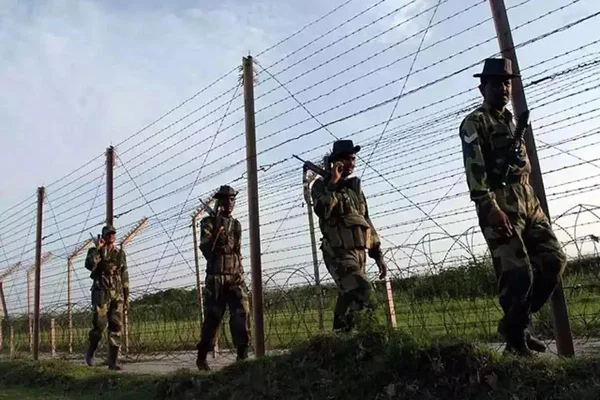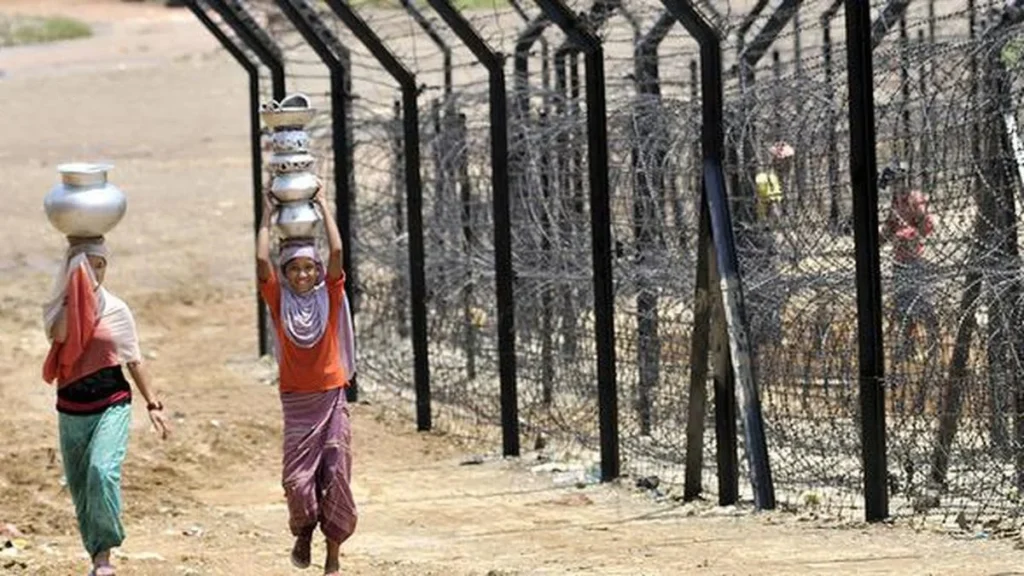The government’s decision to construct a fence along the India-Myanmar border aims to enhance security and regulate cross-border movements.
About India-Myanmar Border Fencing:
- The border is 1,643-kilometre long and spread across the states of Arunachal Pradesh (520 km), Nagaland (215 km), Manipur (398 km), and Mizoram (510 km).
- Currently, two pilot projects to create a fence using a Hybrid Surveillance System (HSS) are under execution.
- Fencing will end will the Free Movement Regime (FMR).
Benefits:
- Security Enhancement: Fencing aims to curb insurgent activities by controlling unauthorized cross-border movement, enhancing the security of India’s northeastern states.
- Illegal Immigration Control: A secure border can regulate migration, preventing illegal immigration and its associated challenges.
- Drug Trafficking Prevention: The border fence is expected to reduce the smuggling of drugs, addressing a significant concern for both countries.
- Human Trafficking Reduction: By monitoring and controlling border crossings, the fence could deter human trafficking activities.
- Boost to Legal Trade: Fencing can promote legal trade by creating a more secure and regulated environment for commerce between India and Myanmar.
- Wildlife Protection: The initiative could also contribute to the efforts against illegal wildlife trafficking by restricting poachers’ access.
- Infrastructure and Development: The project may lead to improved infrastructure, enhancing connectivity and development in border areas.
Challenges:
- Environmental and Social Impact: Critics highlight the environmental cost and the disruption to the lives of local communities due to the fencing.
- Implementation Complexities: The diverse and challenging terrain poses significant obstacles to the construction and maintenance of the fence.
- Political and Ethnic Tensions: The move has sparked debate and opposition, particularly concerning its impact on ethnic groups and local economies
What is the Free Movement Regime (FRM)?
- The FRM is a mutually agreed arrangement that allows tribes living along the border on either side to travel up to 16 km inside the other country without a visa.
- It was implemented in 2018 as part of the Act East policy.
Why was such a regime conceptualized?
- The border was demarcated by the British in 1826, without public opinion and that divided people of the same ethnicity and culture into two nations without their consent.
- Example: In Manipur’s Moreh region, there are villages where some homes are in Myanmar. In Nagaland’s Mon district, the border passes through the house of the chief of Longwa village, splitting his home into two.
Criticism of FMR:
- Illegal migration of tribal Kuki-Chin peoples into India
- Narco-terror network along the India-Myanmar Border (IMB)
- Camps of insurgent groups in Sagaing Division, Kachin State, and Chin State (in Myanmar).
Ref: Source
| UPSC IAS Preparation Resources | |
| Current Affairs Analysis | Topperspedia |
| GS Shots | Simply Explained |
| Daily Flash Cards | Daily Quiz |



